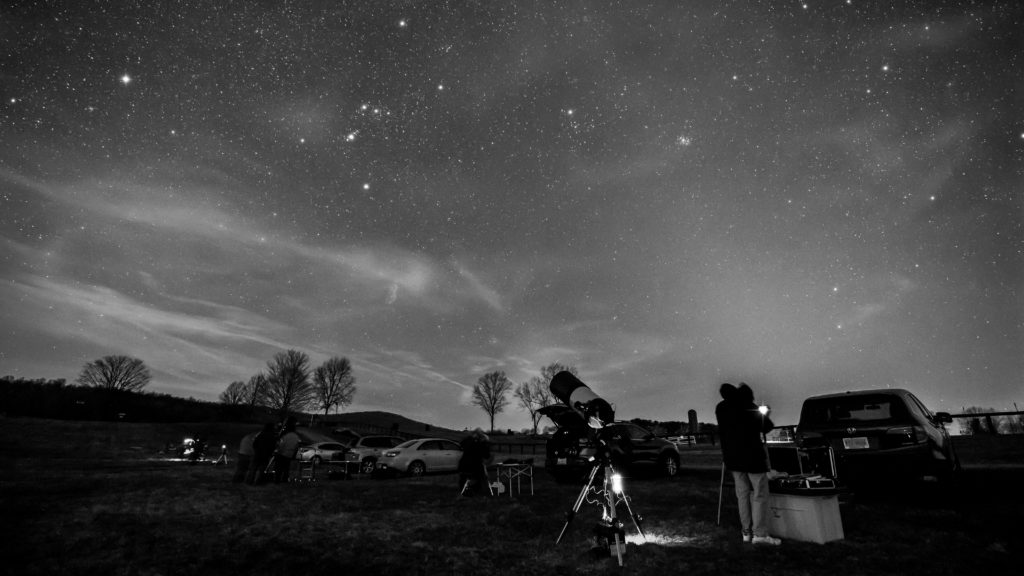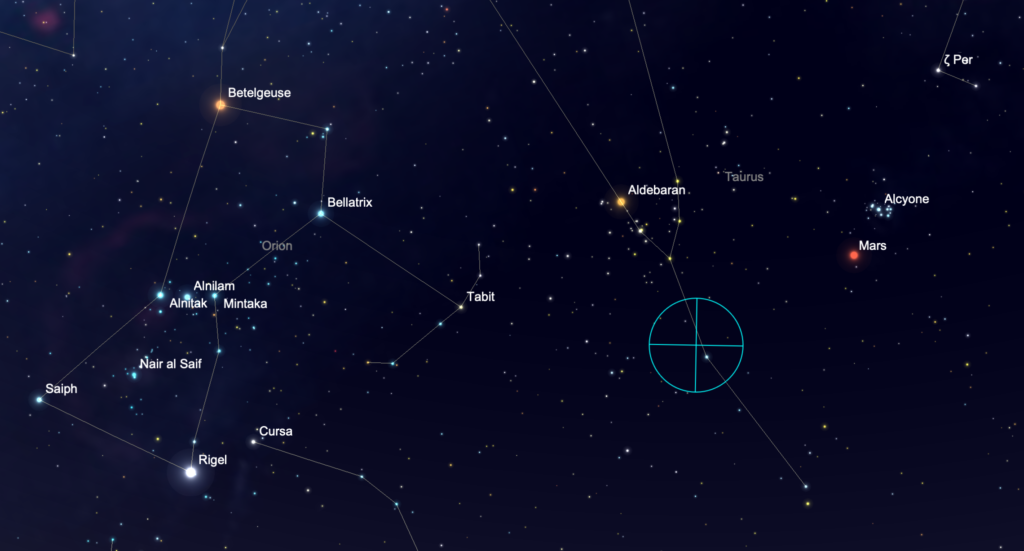
The March sky in 2021 offers plenty to see as the weather slowly evens out. Mars passes through Taurus all month and makes its closest to Pleiades since 2006. Jupiter and Mercury make a dazzlingly close approach early in the month, with Saturn not far away. The prominent constellations Orion, Taurus, and Canis Major all move westward as March progresses, inviting a last chance at a little deep-sky observing with binoculars or a telescope. Deep-sky observers welcome the beginning of galaxy season as the Earth’s nightward side looks out of the plane of the Milky Way into the depths of intergalactic space. And day and night even out on March 20 as the Sun reaches equinox, passing the celestial equator as it moves northward each day. Here’s what to see in the night sky this month…
1-15 March. Look for the zodiacal light in the west well after sunset. Very dark sky is a must. This tall, faint pyramid of white light, which slopes to the left towards the Pleiades and Hyades, is simply sunlight scattered off fine dust particles in the plane of the solar system. It’s sometimes called the ‘false dawn’ or the ‘false morning’. Wait for the Moon to get out of the way for the best chance for viewing.
2 March. The Moon passes bright stars along the southern ecliptic this month. Today it lies about five degrees north of the star Spica in the constellation Virgo well after midnight.
4 March. Nearly five months since last October’s opposition, Mars lingers in the evening sky and passes through the constellation Taurus above the western horizon in March. Today, 1st-magnitude Mars passes just a few degrees from the Pleiades. This is a beautiful sight in binoculars or wide-field telescope. Mars hasn’t been this close to the Pleiades since 2006, and won’t get this close again until 2038.

5 March. The nearly half-lit Moon sits about three finger widths from the bright red giant star Antares in the constellation Scorpio in the southeastern sky before dawn.
5 March. The biggest planet Jupiter and the littlest planet Mercury find themselves just above the southeastern horizon before sunrise and less than half a degree apart! Brighter Jupiter shines at magnitude -2.0, while Mercury reaches magnitude +0.1. Saturn sits nearby, just a little dimmer than Mercury at magnitude +0.7. The two biggest planets are on their way to a fine opposition later this year as they slowly rise earlier each day and work their way westward. From the northern hemisphere, Mercury is a challenge to find low over the horizon, even though it reaches greatest western elongation of 27 degrees. But southern-hemisphere observers have a better time of it as the ecliptic rises at a steeper angle from the horizon.

6 March. Last Quarter Moon, 01:30 UT
7-8 March. Today Mars lies between the Hyades and Pleiades star clusters.
13 March. New Moon, 10:21 UT
17 March. The planet Uranus lies about 3 degrees north of the crescent Moon.
17-18 March. The waxing crescent Moon joins Mars amongst the stars of Taurus in the western sky after sunset.
20 March. The March Equinox arrives at 09:37 UT, marking the beginning of spring in the northern hemisphere and autumn in the southern hemisphere.

21 March. First Quarter Moon, 14:40 UT
23-24 March. The waxing gibbous Moon passes near the Beehive star cluster (M44) in the constellation Cancer and follows it all night until setting.
26 March. Looking for Venus? You’ll have to wait a few weeks. Today, the planet reaches superior conjunction with the Sun after a long apparition in the morning sky. It reemerges low in the evening sky by the middle of April.
28 March. Full Moon, 18:48 UT.
